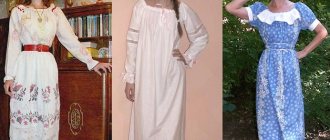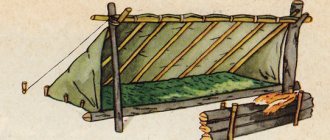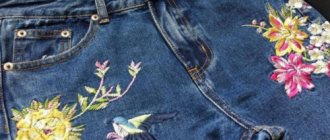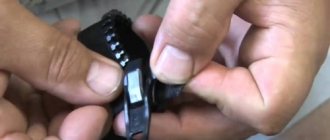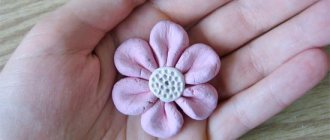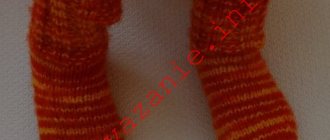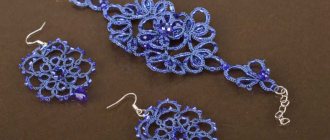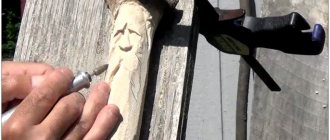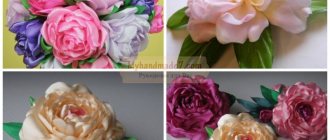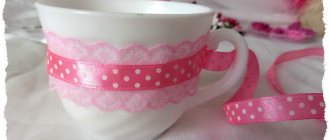If you decide to master the art of sewing clothes yourself, we recommend starting with a dress. Of course, aprons and pillowcases are necessary things, but, you must admit, they are a little boring. And having sewed a dress, you can immediately surprise your friends and colleagues with your skill and show off your new thing. To sew, first of all, you need to learn how to build a base. And then you can start modeling the dress based on the basic pattern. There are several methods for creating patterns: original, classic, using computer programs and manually on a sheet of paper. Let's try to understand the features of some of them.
Where to start learning to cut and sew
Sewing and cutting will be easy if you start learning step by step. It is necessary to start acquaintance from scratch with the theory of tailoring.
- The journey begins with purchasing the necessary tools. To do this, you should watch master classes and pay attention to what seamstresses do. In the first steps, it is enough to purchase basic tools. These are scissors for fabric and thread. They must be of high quality. A ripping tool will come in handy in the early stages. A measuring tape and pins are also a must-have in the needlewoman's arsenal. Threads, needles, marking tools, and a needle threader should be placed in your purse. It is recommended to find a round cutter, an awl, and a steam iron. Fabric acquire primary colors and shades. You should not take complex materials for a bright design that are not easy to process. These are silk, chiffon, and thick fabrics.
Sewing tools
- Decide on the main tool - a sewing machine. The choice depends on the goal. If you don’t want to professionally sew custom-made items, you shouldn’t spend money on expensive options with hundreds of functions that you won’t need. Working with professional models is difficult. You should choose household machines.
- View common sewing mistakes. This is often explained in lessons for beginning craftswomen. It’s better to take them into account right away than to learn later by correcting them using materials.
Selection of sewing machines
- Next they learn to take measurements. All further work depends on the correctness of this process. Men's or women's clothing will turn out to be small, large, or will lie awkwardly if the parameters are incorrectly determined.
- Familiarize yourself with basic patterns. Find examples of cutting skirts or lambrequins. It is necessary to understand the essence of creating patterns and learn to determine the type of finished item. Or, using the example of ready-made clothes, mentally lay them out on paper.
Important! It is recommended to use several sources to teach beginning seamstresses.
Basic dress pattern
Tools
To create a pattern, the cutter needs to take specific tools. As a rule, you always need paper with a ruler and a pencil according to the instructions. It is best to take a transparent and wide ruler in the form of a half-drawn ruler, which is marked in inches and centimeters. Inches are applied at the time of constructing the pattern, which is taken from magazines or websites. You may also need paper tape. It can help with gluing additional paper sections and placing folds on the pattern. But it is enough to purchase a regular roll of masking tape, 3 centimeters wide.
A toothed copy wheel is a tool that will help you transfer a pattern onto paper.
A regular pencil with soft markings. Designed for drawing on thick paper or whatman paper. You will also need an eraser to remove unnecessary lines.
Tools you may also need are a tailor's tape measure, an elastic band or a full-length measuring tape along with tailor's scissors. The latter should be sharp and comfortable.
Note! It is not recommended to cut paper with tailor's scissors. Otherwise, they will become dull and it will be impossible to work with them further.
The tools for creating a pattern will need a rectangular ruler and graph paper to transfer the drawing onto a separate thick sheet.
Tools for creating patterns
Features of taking measurements
When reading about sewing, it is necessary to dwell for a long time on the features of taking measurements. If you skip this stage of learning, you will not be able to develop further. Basic rules to follow:
- Before measuring parameters, wear only underwear. It is not recommended to choose push-up, it changes the volume.
- Take the most natural pose possible. Pogs are placed at shoulder level.
- Each measurement is taken several times.
- The measuring tape is leaned so that it lies snugly, but is not tight.
- The points of the shoulder and the location of the seventh cervical vertebra are marked.
Table for taking measurements
Important! In the diagrams, “B” is height, “D” is length. "O" is the girth and "W" is the width.
To measure the total length of the product, measure the height of the model with a centimeter. The first point of the measuring tape is the seventh cervical vertebra. Then the tape is lowered down the vertebra to the waist and further to the end of the product. This is an example for a dress.
You might be interested in this: Creating patterns and sewing children's dresses for girls of different ages
The front length starts from the waist, lowering a centimeter along the stomach to the floor. Measuring from the side also starts from the waist to the hips. The length of the shoulder starts from the neck to the beginning of the arm. The arm is measured from the shoulder to the little finger. If the sleeve is three-quarters, the tape stops at elbow level. Hip height is measured from the side of the waist to the hip line. The seat height is also required.
Taking measurements while sitting
For women, the circumference of the chest is measured, as well as below and above it. Determine the parameters of the waist, hips, legs. Legs are measured 15 cm above the knee. They look at the circumference of the calves, neck, and wrists. It is important to make increases so that the clothes are loose or tight-fitting. Each type of product has its own number of increments.
Important! An apron is one of the easiest options for sewing in the first stages of getting acquainted with sewing.
Increase table
Various tips for beginners
Unfortunately, in a short article it is impossible to provide comprehensive information on how to make a pattern with your own hands, especially for those just beginning to sew. To do this, you need to complete a 3-4 month training course, at a minimum. However, it is possible to provide important directions for self-study. Some information can be found on our website, other websites, books and video courses. Here, for example, is how to take measurements.
To create a skirt pattern, sometimes 3 measurements are enough: waist circumference, hip circumference and skirt length. A little more measurements need to be taken for the pattern of trousers or shorts. But to sew a dress, you will have to take many additional measurements, which will allow you to accurately convey the position of the shoulder, chest, calculate the volume of the armhole, etc. On our website there is an article about just this: How to take measurements for a dress.
Any pattern is constructed so that the fabric of the clothing does not fit tightly around the figure, but has a little freedom. Therefore, when constructing, various increases in freedom of fit are used. Their size depends mainly on the size of your clothing and the characteristics of your figure (fullness). Take this into account when creating a pattern. See Fit Increases.
Do not blindly trust patterns from various magazines and Internet resources. You should always check them before cutting your fabric. It is impossible to create a perfect pattern that fits any figure. Apparently this is why designers often give large allowances for freedom of fit. And to check you need to learn how to make patterns with your own hands. This is such a vicious circle.
When laying out patterns on fabric, the problem of pattern parts shifting often arises. You can use thin and sharp tailor's pins and pin the paper parts to the fabric. But, not necessarily. But you need to pin paired pieces of fabric with pins. This will allow you to avoid them shifting when cutting.
All about pattern making and fabric cutting
You should start learning cutting and sewing according to a pattern with simple products. It could be a skirt or a light, simple dress. Clothes should be made of medium-weight fabric, since lightweight materials are also difficult to work with.
A large table is used to lay out the parts of the base product. It is inconvenient to lay out fabric and patterns on the floor. This step requires chalk, pins, a ruler or a measuring triangle.
Important! When sewing and cutting, you should double-check the measurements and indentations several times.
After constructing the basic pattern, it is checked for accuracy, and the control lines are also examined. Controls the waist and hip lines. Measure the circumference of body parts. All allowances for the comfort of clothing are recalculated.
Easy pattern for beginners
Before cutting, prepare the material. The fabric is treated with a steam iron. Wet-heat treatment is carried out depending on the type of fabric.
Things to remember when cutting:
- The grain thread is parallel to the edge. Transverse - perpendicular.
- To determine the direction of the threads, the flap is pulled sharply. The material will not stretch along the shared threads. Cotton appears when suddenly stretched.
- The cut is folded in half. Attach the pattern pieces.
- Belts, facings and small parts are laid out between the main ones to save money.
- If there is lint on the material, it should be directed from top to bottom.
- Next, the parts are attached and the outline is outlined with a marker. They make allowances. Transfer the control lines to the front side using snares.
Fabric processing technology
Patterns are laid out on fabric in different ways, depending on the type of product. Here are the main options:
- Layouts are laid out in half.
- Layouts are laid out in half. Connect slice to slice. The parts lie along the transverse thread. Most often, the dressmaker prepares the future blouse in this way.
- The parts are laid out at an angle when they are going to sew skirts or dresses.
- Double fold and partial fold layouts are also used for men's and women's clothing.
In order for everything to be done technically correctly, it is important to understand the direction of the threads and its significance for self-sewn clothes.
Skirt arrangement option
Design of a set of patterns
A pattern with notches applied and decorated with the necessary inscriptions is called a pattern. Any craftswoman can work with it; the information is applied according to certain rules:
- The position of the fabric warp thread is marked in the center of the part.
- Brief information about the pattern is written in the lower right corner. Pattern markings include:
- product name;
- type of material (knitwear or fabric);
- part name;
- size;
- number of parts, sometimes symmetry is indicated (a pair of parts instead of two).
- Notches are placed along the main belts; when sewing, they are aligned on the parts being sewn.
- Patterns can be additionally decorated with a mark on the date of construction and a sketch of the model.
How to make a sewing pattern yourself
In cutting and sewing courses from masters for beginners, the topic of the need for patterns is discussed. They also tell you how to make it at home. First you need to understand what it is and why a novice seamstress needs the device.
A sewing pattern, whether made by hand or purchased, is necessary for constructing a drawing on fabric. Curvilinear patterns make the work of tailors easier. Only experienced professionals can draw an intricate pattern by hand. Newbies don't have a trained eye. At the initial stage, it is recommended to have an oval pattern at home, like a drop, and also a long one, like a saber.
You may be interested in sewing an invisible hidden zipper into skirts
The drop helps to shape the shoulder joints. The saber is designed to draw smooth lines on the side seams. There is also a French pattern, it suits everyone.
Set of patterns
How to make a pattern:
- Download the file for printing. Easy to find on the Internet. You can first choose two main types.
- Print at 100% scale. It is important that the image is of high quality and the marks are clearly visible.
- Cut to shape. Glue the paper onto thick cardboard. If it is possible to cut a shape out of plywood, that’s good. Patterns are not used once.
Important! One of the options for first work on a sewing machine is bed linen.
Working with patterns
Cut
Different sleeve cuts are used in women's dresses:
- set-in, the most common, on its basis it is easy to model other types;
- raglan, suitable for sports style models with semi-fitting and loose silhouettes;
- one-piece with gusset, recently back in trend;
- shirt, it is also set-in, but is built on a low armhole of the base of a loose silhouette.
There are many forms of sleeves, most of them are easy to build on the basis of the above.
Constructing a pattern for the base of a dress using the 10-measurement system
Creating a pattern for the base of a dress using the 10-measurement system is suitable for beginner dressmakers. Even professionals use this method. Since the patterns according to the method are accurate, and the clothes fit well, repeating the size.
The pattern for the base of a dress or other clothing using the 10-measurement system has the following features:
- Patterns are easy and quick to create. There are only a few formulas for calculation. This saves time and effort. Even a novice needlewoman can build a basic grid.
- To create a pattern you need 10 measurements. But at this stage it is recommended to stop for a long time. The parameters must be as accurate as possible.
Basic pattern according to the 10-measurement system
- To form an armhole, you do not need to do additional independent calculations. The articulation of the sleeve is built into the system.
- The chest dart is calculated residually. When performing basic calculations, it is possible to reach this indicator.
- The pattern is being rebuilt. Darts are suitable for creating any clothing. It could be a dress or a coat. Jacquard skirt or jackets of different styles.
- It is important to make a margin of 3 cm for those with a size larger than 44. Allowances are not made for corsets or stretch fabrics. For those with a size smaller than 44, a margin of 2 cm is made.
Blouse pattern drawing
The author of the methodology records courses and constantly updates them. It gives a clear example of products that were made using the Riga computing system. What is included in the course:
- The procedure for taking measurements of a female figure. Features 10 parameters.
- Constructing a base grid of 10 lines. Creating calculations for the back, front and armhole. Determination of waist and hip levels.
- Shoulder dart calculations, shoulder slope determination.
- Calculations on the shelf. Placement of the chest dart.
- Calculations for the armhole. Determining its depth and deduction without formulas.
- Definition of waist darts.
- Construction of the sleeve in the drawing.
- Marking parts, applying a layout.
- Planting analysis, making adjustments.
- Working with different sizes.
Thanks to the system, you can work with different fabrics, sizes and styles. And also save energy and time.
Building a Base Mesh
Terms used when developing a drawing
Shelves
If you look at the drawing, you can see that it consists of two parts. One of them is the back part, the other is the front part. In the language of tailors, these halves are called shelves. Each shelf includes its own elements that ensure a good fit of the product.
Armhole
This is the cutout that is needed to thread the arm through. A sleeve is sewn into it. The armhole is formed when creating the drawing. It contains the volume and bend of the arm for the person from whom measurements are taken. When taking measurements qualitatively, the armhole gently fits the hand and does not tighten the fabric when moving. The drawing specifies the minimum cutout size. You can always design the armhole shape to suit your taste. Its size can only go beyond the scope of the diagram in a larger direction. Otherwise, the cutout for the sleeve will restrict the movement of the arm. This is the basic rule when modeling clothes.
Darts
There are two types of these parts:
- located on the back shelf;
- located on the front part.
Back darts
The shoulder strap prevents the fabric from puffing up in the neck area. Thanks to it, the material fits tightly to the body in this place.
When modeling new styles, clothing designers often move the shoulder dart from its place on the back shelf. This is done for beauty. It moves to the clasp in the spine area, or is located in close proximity to the sleeve opening. Excess fabric is cut off in the form of a corner. This detail is excluded when sewing products from soft and stretchable fabrics.
A dart at the waist is necessary to emphasize its curve. The size depends on the shape of the figure. The excess fabric is hidden inside when the ends are sewn together.
Darts on front details
Designed for a beautiful fit. The lower peak of the dart falls exactly on the top of the most protruding part of the front. The chest dart is most often placed on the side, just below the armpit, since the shoulder dart is too noticeable. The lateral position is completely justified, as it better emphasizes the beauty of the bust. In the diagram it is at the top. When everything is ready, it can be easily moved. There is no need to create a new drawing. Transfer can be done to different areas. This is shown in the figure:
Chest level
This level is convenient to use as a guide. For example:
- the dart on the back ends right there;
- This is also where the lower edge of the sleeve opening is located and where the shoulder dart ends.
Sewing and processing technology
Cutting and sewing a dress is divided into several stages. Step by step guide:
- Prepare the collar, pockets or cuffs, if any. Iron and save.
- Process the back and front darts. If there are patch pockets, stitch them.
- Prepare the skirt. Process and stitch the sections.
- Prepare sleeves.
You might be interested in this: Simple patterns and sewing of men's and women's caps with visors
Assembly:
- Connect the back and front along the shoulder sections.
- Sew a collar or prepare a neckline. Work on the fasteners.
- Stitch the side seams.
- Process the bottom of the fabric.
- Sew in the sleeves.
- Connect the bodice and skirt.
- Iron the dress.
- Sew buttons and other small details. Lace and cuffs.
Dress for beginners
Basting and stitching parts, ironing:
- Basting is done with temporary hand stitches. They are easy to detach.
- Before starting the process, the parts are laid out face down. Connected in several places.
- After stitching, the fabric is ironed wet until completely dry.
- Thick paper is placed under the allowances when ironing.
- When processing collars, cuffs, and valves, templates made of thick paper are used.
Important! It’s easy to find many fashionable ideas in the magazine “Chic: Sewing and Cutting”.
Ironing fabric before sewing
To make a dart, the piece is placed face down along the center line. Its sides are thus combined. In this case, the edges are connected with pins.
Before sewing for the first time, you should carefully consider the choice of fabric. A pattern may only fit a material that stretches, or vice versa. If there is a pattern on the canvas, you need to take into account that you will have to connect the pattern at the joints.
Some dress styles may seem simple at first glance. But you need to pay attention to the description of the master class and have a rough idea of the scale of the work. Many difficulties arise with sleeves.
Skirt pattern
Dress darts along the waistline
From point W2 to the left and to the right, set aside 1 cm.
Segment W2d = 12 - 13 cm. Segment B9d1 = 4 - 5cm. Connect all the dots with straight lines on the front of the dress pattern.
Now let's make a dart on the back half of the dress. BB6 = B6B2 = BB2 / 2. W3d2 = 15 - 16 cm. B6B7 = 3 - 4 cm.
Place point W3 and set aside 2 cm from the right and left. Connect all the points with straight lines on the back of the dress pattern.
Bodice pattern
The bodice base pattern can be made using the French method. How to get started:
- Take measurements from the model. This is the length from the back to the waist. And also the front to the waist. Height and center of the chest.
- Shoulder length and chest circumference required. Next, measure the circumference of the Italian neck.
- Construct the bodice.
The middle of the back, the vertical left line is equal to the measurement of the length of the back to the waist. The middle of the strip is equal to the length of the front to the waist. The width of the back will be the chest circumference divided by 4 −1. The front width is equal to the chest circumference divided by 4 + 1.
Bodice pattern option for a dress
To calculate the depth of the back neckline, you need to divide the neck circumference by 16. If you divide it by 6, you can get the width of the back and front necks. The depth of the shelf neck is equal to the width of the neck + 2.
An angle of 18 degrees is marked along the shoulder line and 26 for the front. Draw shoulder lines. To get the bottom point of the armhole, divide the length from the back to the waist by 2 and add 1.
You will need a template with degrees marked
The reference point for constructing the armhole is equal to the length of the back to the waist - the length of the back to the armhole - the depth of the back neck made at 3 and + 1. To find the center of the dart, set aside the height of the chest on top and half the center of the chest to the side. Dart opening = 1/20 girth. Waist darts are equal to bust circumference - waist circumference.
Transfer of breast dart
To sew your first clothes yourself, you need to familiarize yourself with the theory of patterns and sewing. It is recommended that you first familiarize yourself with the process of creating simple skirts and dresses. Possibly bed linen and curtains. One of the important stages in a seamstress’s work is taking parameters. To facilitate the process, they use a system of 10 measurements.
Calculation
To construct a size chart, you need to know the neck half-circumference with the chest and hip half-circumference. You also need to know the value of half the waist circumference. From the lengths, you should know the length of the product, the shoulder, the back to the waist and the shelf to it. From the width - the width of the shoulder, chest and back. From the heights - listed above.
Note! When taking measurements, it is necessary that the centimeter be located on a strictly horizontal surface in a narrow and wide place. The tape should not be stretched due to the narrowness of the product. You can see what an example calculation looks like below.
Meshing example
